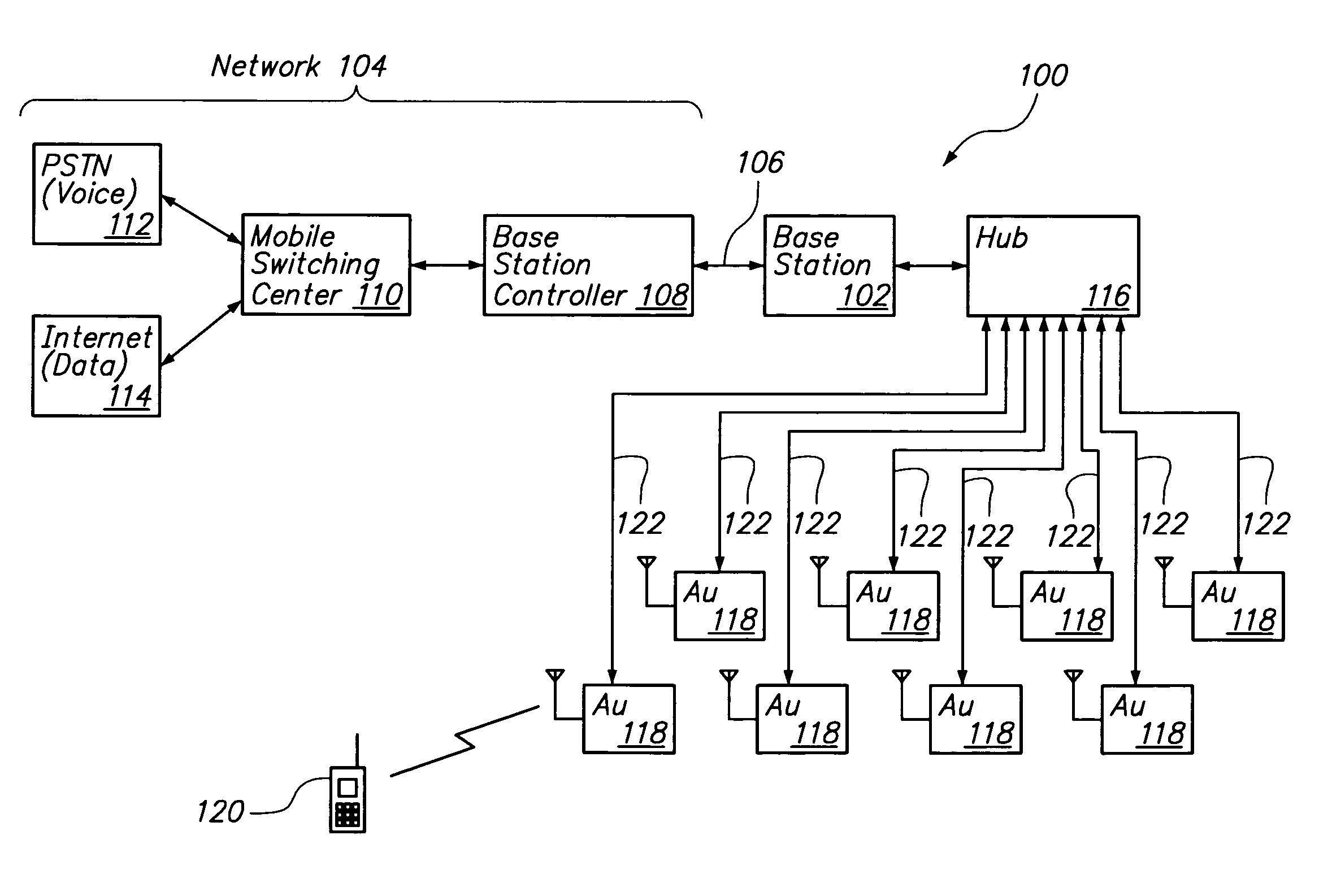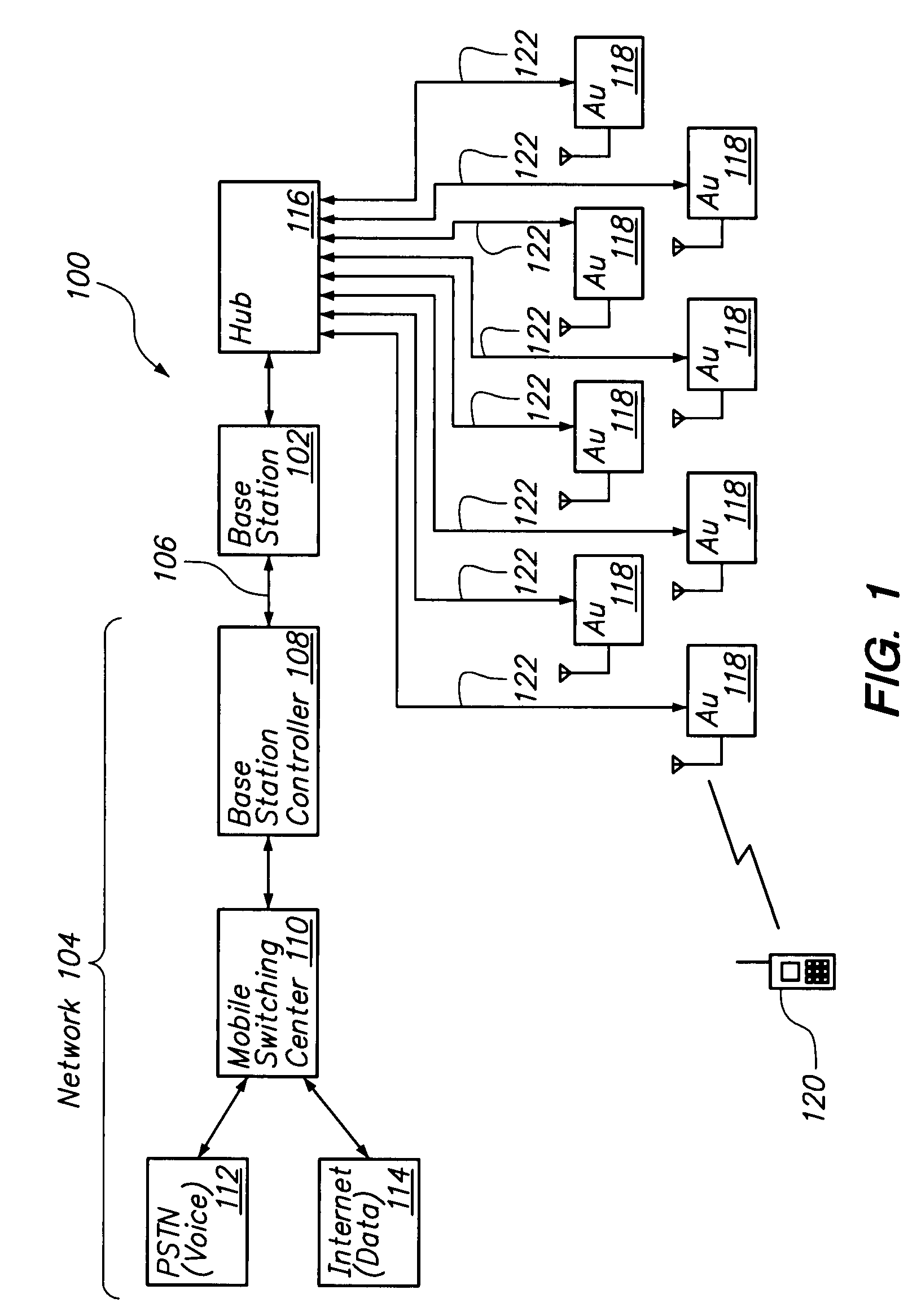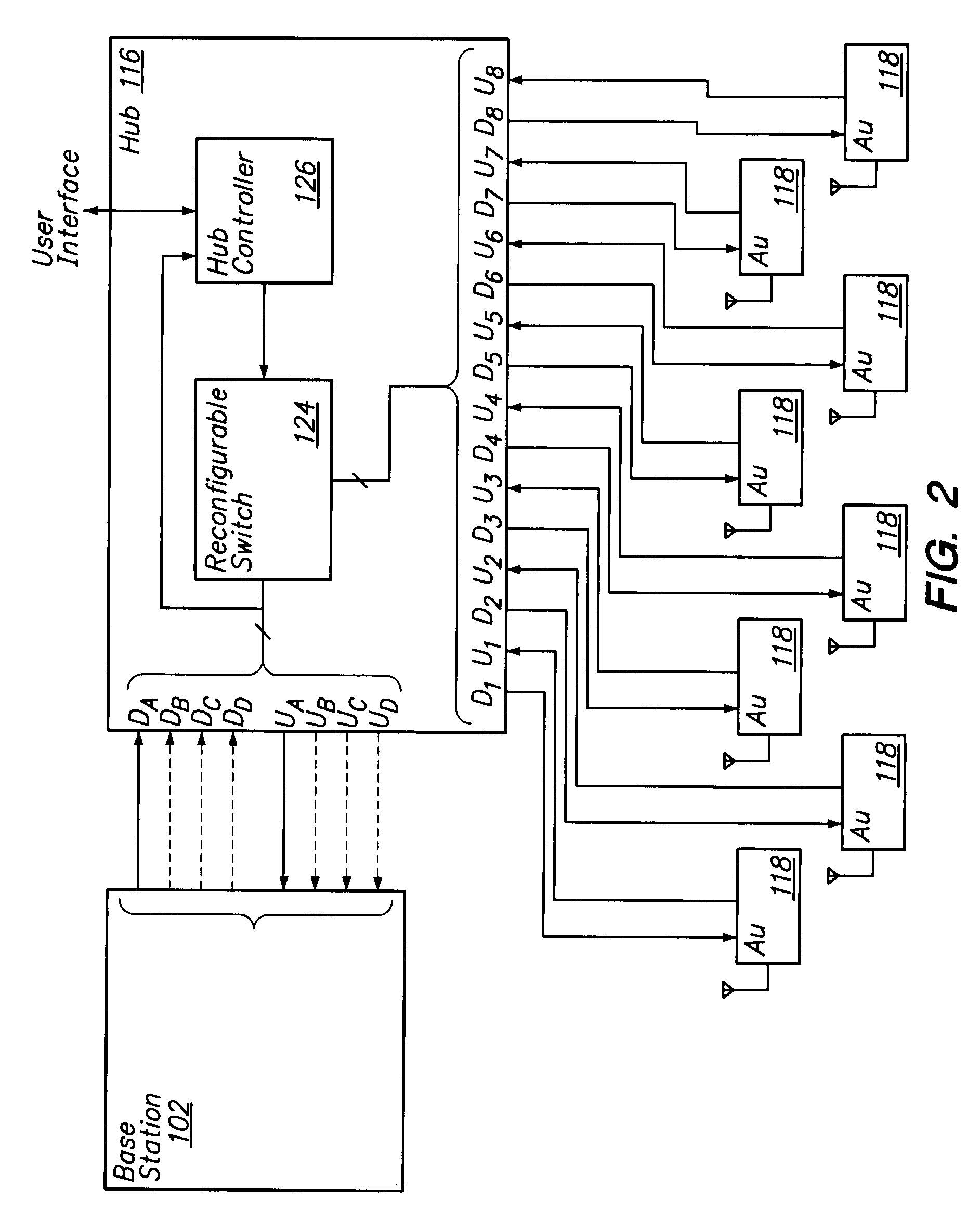Distributed antenna communications system
a distributed antenna and communications system technology, applied in diversity/multi-antenna systems, wireless communication, wireless communication, etc., can solve the problems of indoor communication difficulties of mobile units, and the lack of room for improvement in conventional distributed antenna systems
- Summary
- Abstract
- Description
- Claims
- Application Information
AI Technical Summary
Benefits of technology
Problems solved by technology
Method used
Image
Examples
Embodiment Construction
[0020]FIG. 1 illustrates a distributed antenna communications system 100 in accordance with an embodiment of the present invention. As shown in FIG. 1, a base transceiver subsystem (which may also be referred to as a BTS or base station) 102 is communicatively coupled to a communications network 104 via a backhaul link 106. Within the communications network 104, the backhaul 106 is coupled to a base station controller (BSC) 108, which is, in turn, coupled to a mobile switching center (MSC) 110. The MSC 110 is coupled to a public switched telephone network (PSTN) 112 (e.g. for voice communications) and may also be coupled the Internet 114 (e.g. for data communications).
[0021]The BSC 108 may perform various conventional functions including radio channel allocation, call handovers among base stations, configuring the base station 102, handling alarms and performing network management functions. The MSC 110 may perform various conventional functions including circuit switching, and prov...
PUM
 Login to View More
Login to View More Abstract
Description
Claims
Application Information
 Login to View More
Login to View More - R&D
- Intellectual Property
- Life Sciences
- Materials
- Tech Scout
- Unparalleled Data Quality
- Higher Quality Content
- 60% Fewer Hallucinations
Browse by: Latest US Patents, China's latest patents, Technical Efficacy Thesaurus, Application Domain, Technology Topic, Popular Technical Reports.
© 2025 PatSnap. All rights reserved.Legal|Privacy policy|Modern Slavery Act Transparency Statement|Sitemap|About US| Contact US: help@patsnap.com



